by Moe | Oct 3, 2013 | Apocalypse, History of the Brotherhood
Before the advent of Christianity in the Roman Empire, the people of the world were mainly separated by race, tribe and/or land. The meaning of the word ‘religion’ is to tie or bind. 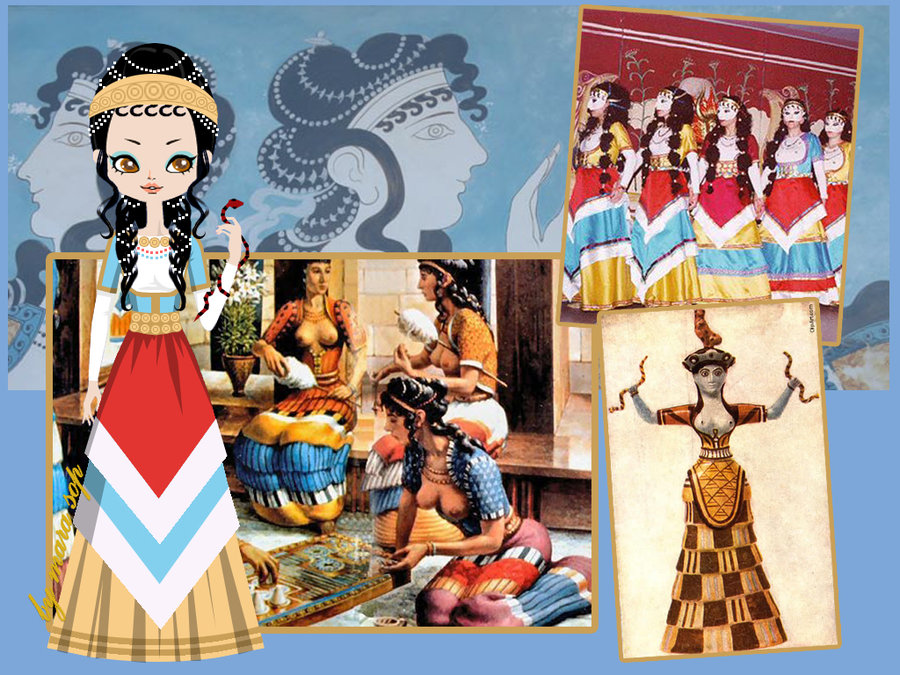 Hence, when the Romans had created the new religion of Christianity, their goal was to tie and bind people of various races into the folds of the Roman Empire under the banner of this Universal Religion. Any people who practiced their ancient tribal rights or religion, that was not part of this new government approved religion of Rome, were now considered pagan or barbaric in nature; a people that would be given a new religious label, where forever thereafter, they would be known as the ‘Jews.’
Hence, when the Romans had created the new religion of Christianity, their goal was to tie and bind people of various races into the folds of the Roman Empire under the banner of this Universal Religion. Any people who practiced their ancient tribal rights or religion, that was not part of this new government approved religion of Rome, were now considered pagan or barbaric in nature; a people that would be given a new religious label, where forever thereafter, they would be known as the ‘Jews.’
Many of these ancient people of these lands, who were now called Jews by the Romans, were from some of the most powerful tribal families that were related by blood from the old Greek empire and other countries such as Egypt, Ethiopia and Libya. Their religion, priesthood and combined military powers were the biggest threat to this new Roman Empire and religion. Therefor, the Romans would engage in a massive military campaign in the regions of these people, in order to subjugate them and to bind them by religion unto the empire under the symbol of the fasces.
One of the main strongholds and possibly the capital for these ancient tribes that are now considered Jewish people was on the ancient island of Crete, which I believe was once the main capital to the Jewish people of the Old Testament. Some of the most famous authors and historians such as Josephus and Tacitus had written that the first converts to the Christian faith under Rome were said to come from Crete. It was these Cretan Jews to whom Saint Peter preached on the memorable day of Pentecost, where he had converted three thousand of them to Christianity and who would then preach the gospel on their return from Jerusalem. Later, the Apostle Paul would go to Crete in order to live for two years as part of a missionary effort of Rome, where he too was successful like his predecessor Peter in converting many of the island’s inhabitants, who were now called Jews, and bind them to Christianity. Before Paul had left Crete, he had appointed the newly converted Roman Gentile, Titus as Bishop to the island, in order that he ordain elders in every city. The facts that two of the most important Roman Catholic Saints and one of the most powerful bishops had spent a lot of time and resources in Crete, proves that this island was most likely the main capital to the Jewish people in this region of the world.
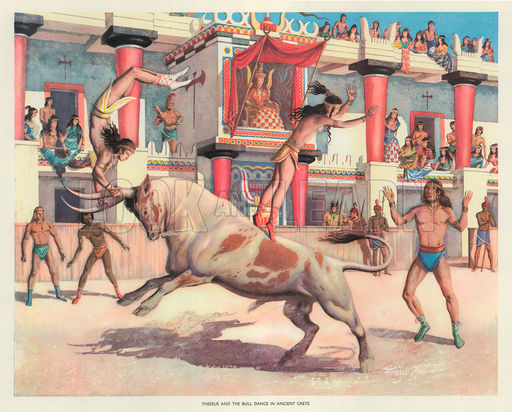 This makes perfect Jewish sense, because Crete is where their God Zeus was born and the island where most of their legends, myths and Greek epics had originated. Roman Senator and historian, Cornelius Tacitus (110 A.D.) had written that the Jews often traveled to Crete to celebrate the festival of Pentecost in Jerusalem and that they eventually were exiled from the island when Saturn was driven from his throne by the violence of Jupiter. The Cretans are called Idaeans, and then Judieans who eventually became fugitives from the island and who then settled on the nearest coast of Africa in the remotest corner of Libya. In, The Works of Tacitus, he explains the relationship with Crete, the Jewish people and the exodus from the island of Crete to the coast of Africa in Libya;
This makes perfect Jewish sense, because Crete is where their God Zeus was born and the island where most of their legends, myths and Greek epics had originated. Roman Senator and historian, Cornelius Tacitus (110 A.D.) had written that the Jews often traveled to Crete to celebrate the festival of Pentecost in Jerusalem and that they eventually were exiled from the island when Saturn was driven from his throne by the violence of Jupiter. The Cretans are called Idaeans, and then Judieans who eventually became fugitives from the island and who then settled on the nearest coast of Africa in the remotest corner of Libya. In, The Works of Tacitus, he explains the relationship with Crete, the Jewish people and the exodus from the island of Crete to the coast of Africa in Libya;
The Jews, we are told, escaping from the island of Crete, at the time when Saturn was driven from his throne by the violence of Jupiter, settled in the extreme parts of Libya. Their name is adduced as – a proof. Ida, it is alleged, is a well-known mountain in Crete: the neighboring Idaeans, by an addition to the name to adapt it to the language of barbarians, are ordinarily called Judieans. Some say that the population, overflowing throughout Egypt, in the reign of Isis, was relieved by emigration into the neighboring countries, under the conduct of Hierosolymus and Juda. Many state that they are the progeny of the Ethiopians) who were impelled by fear and detestation to change their abode in the reign of King Cepheus.
This exile of the Cretan Jews, I had written about in my previous articles such as, Crete: The Lost Island of Atlantis and Crete: The Land of Milk and Honey in Canaan. It is interesting that Tacitus says that the Jews traveled to Crete in order to celebrate the festival of Pentecost in Jerusalem, because he appears to simply allude to the fact that Old Jerusalem is on the island of Crete. This does not seem to be a mistake in my eyes of reason, but a well placed truth that we also can verify with other very important authors who point out that the people of Jupiter from Crete, were named “Jud [Jews.]” This author who called the people of Crete Jud (Jews), was no other than the most famous 1st century Jewish-Roman historian, Josephus Flavius.
In a sign of blood to commemorate this new major political alliance between Rome and Crete, Josephus would divorce his third wife at around the age of 75, to then marry a Greek Jewish woman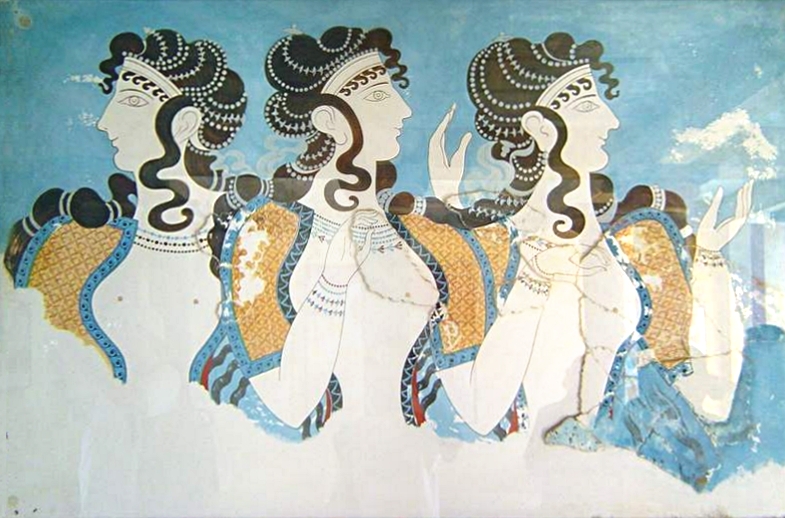 from Crete. She was a member of a very distinguished family who had bore him two sons, Flavius Justus and Simonides-Agrippa. Josephus is simply one of the most important Jews and people in early Roman history, and who is one of the keys in connecting these two people into one empire. Hence, it only makes sense that he would marry a woman from one of the most powerful Jewish families from the most powerful Jewish state on the island of Crete, for political purposes. He had also written about the exodus of Jews from Crete in a similar manner to Tacitus in his book, “The Works of Flavius Josephus;”
from Crete. She was a member of a very distinguished family who had bore him two sons, Flavius Justus and Simonides-Agrippa. Josephus is simply one of the most important Jews and people in early Roman history, and who is one of the keys in connecting these two people into one empire. Hence, it only makes sense that he would marry a woman from one of the most powerful Jewish families from the most powerful Jewish state on the island of Crete, for political purposes. He had also written about the exodus of Jews from Crete in a similar manner to Tacitus in his book, “The Works of Flavius Josephus;”
The tradition is, that the Jews ran away from the island of Crete, and settled themselves on the coast of Libya, and this at the time when Saturn was driven out of his kingdom by the power of Jupiter: an argument for it is fetched from their name. The mountain Ida is famous in Crete; and the neighbouring inhabitants are named, which, with a barbarous augment, becomes the name of Jud [Jews.] Some say they were a people who were very numerous in Egypt, under the reign of Isis, and that the Egyptians got free from that burden by sending them into the adjoining countries, under their captains Hierosolymus and Judas.
In the Ancient Egyptian texts, Crete was called Keftiu. In the bible, it was known by the names such as Kaftor, or Caphtor in the Land of Canaan. This island was also part of Palestine, where the island’s inhabitants were known as the infamous Sea Peoples and the foes of Israel, the Philistines. The Latins had called Crete in their native language, Cappadocia, and the people, Cappadocian. Later it would also be known as Candia and Arcadia.
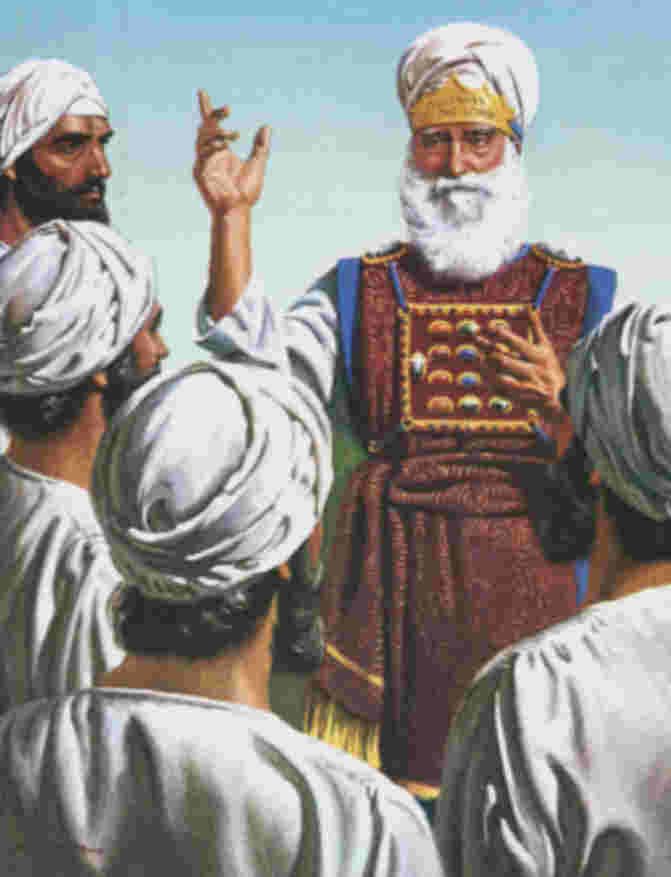 The priests of the Cretan Jewish people were known by several names such as the Curetes (Kuretes), Corybantes, Dactyls, Cabiri, and Telchines who the 1st century Greek philosopher and historian, Strabo had said were names that are often used interchangeably with one another. These priests were placed in charge of protecting Zeus (Jupiter or Jove) by his mother Rhea from his vengeful father Cronus (Saturn or Satan). Rhea was worshiped under the symbol of the Moon as they had carried the Ark. For many centuries, they had practiced their religious rites, magic and tribal customs there in Crete, before they would release them unto the world.
The priests of the Cretan Jewish people were known by several names such as the Curetes (Kuretes), Corybantes, Dactyls, Cabiri, and Telchines who the 1st century Greek philosopher and historian, Strabo had said were names that are often used interchangeably with one another. These priests were placed in charge of protecting Zeus (Jupiter or Jove) by his mother Rhea from his vengeful father Cronus (Saturn or Satan). Rhea was worshiped under the symbol of the Moon as they had carried the Ark. For many centuries, they had practiced their religious rites, magic and tribal customs there in Crete, before they would release them unto the world.
Today, many of these priests from Crete would be known in the Judaic religion as Jewish Samaritans, or as the Tribe of Levi. Many very important biblical characters come from this tribe, such as Moses, Aaron, John the Baptist, and Barnabas who was born in Ancient Greece on an island near Crete called Cyprus. Some of their tribe had come to the Roman empire in Italy, where they had settled in the hills of Tuscany. They were known in these lands as the Umbrians, and in the North as the Northumbrians. In Ireland from their home base on the Island of Iona, they were known as the Culdee Druids of the Celtic Church who themselves converted to Christianity, and had also helped convert these mighty pagan countries in the badlands of the North to Christianity. Some of the Levite priests from this tribe would join Rome under the New Testament (New Law) via Roman Law with Augustus Caesar as their first official Pontifex Maximus (Pope). He would become their savior because he had established peace via PAX RAMONA by abolishing all other religions and cults, to then help incorporate a new Universal Religion at the beginning of this age, that we know of as Catholicism under the brotherhood banner of Christianity. A religion, that the same Levite priests who would be called Jews in places such as Greece, were now Christians bound together under Roman Law. Hence, the New Testament of Rome with Augustus Caesar as Pope and the Levites as priests, would begin the great divide between these ancient Greek tribes that are now considered Jewish for their pagan practices.
In Greek mythology, Crete was where the God Zeus was born to his mother, Rhea and his vengeful father Cronus. Cronus sired six children by Rhea: Hestia, Hades, Demeter, Poseidon, Hera, and Zeus in that order, but swallowed them all as soon as they were born except Zeus, since Cronus had learned from Gaia and Uranus that he was destined to be overcome by his own child as he had overthrown his own father. When Zeus was about to be born, however, Rhea sought Uranus and Gaia to devise a plan to save him, so that Cronus would get his retribution for his acts against Uranus and his own children. Rhea gave birth to Zeus in Crete, handing Cronus a stone wrapped in swaddling clothes, which he promptly swallowed. Then she hid Zeus in a cave on Mount Ida in Crete. (Wikipedia)
The king and greatest of all gods, Zeus (Jupiter) was now hidden in a cave in the dark by his mother the moon goddess, Rhea who would be the light to lead us through the night. The moon goddess would now be placed in charge of religion, and the ancient priesthood from Crete would be the defacto protectors. According to Sextus Empyricus, the Trojan war was fought over a statue of the moon goddess.
Rhea is called the Mother of the Gods, Mother of the World, Goddess of Heaven and the Goddess of War, just to name a few of her titles. The second largest moon of the planet Saturn is named after her. Saturn is known in the occult, as the dark planet and planet of chaos. One of Rhea’s symbols is the moon, and in ancient Crete one of their main emblems was also the moon which can often be found on Cretan seals that served as their magical talismans. In the Cretan Vocabulary, one of the names for the moon was Diana. It is said that in ancient Crete, a common practice was ritual prostitution by devotees to the Moon goddess as it was in Cyprus, Libya, Syria, Asia Minor, and Palestine.
The Greeks had also esteemed a goddess they had called, ‘Cybele’ who was often depicted crowned with a crescent moon, to be the same with Rhea. I had spoken about these magicians from this island and how part of their magic was writing and using word play such as allegory, where they perfected that art of concealing truths in allegorical stories, parables, poems and pseudo history. A form of magic and word play that made them some of the best wordsmiths this world has ever known. Hence, the many stories and various names of gods and goddesses over the last few thousand years, can be attributed to these people, who through Babylon and the Tower of Babel, they had employed this word magic upon the world.
The goddess of the moon and mother of Crete, Rhea was also known at various times throughout history by many names such as Diana, Ma, Enyo, Selene, Ishtar, Astarte, Isis, Hecate, Artemis, Magna Mater or “Mary or Mari (Ma-Ri).” Speaking of Isis, the Greek historian Ptolemy had called her the goddess of a ten-thousand names. The meaning ‘ma’ is mother, and ‘ri’ means queen. Hence, the meaning of Mary is “queen mother.” In the etymology of the name Rhea, Plato and Chrysippus connected the word with “ῥέω” (rheo), “flow”, “discharge.” This discharge may be a toxic gas with a pungent irritating smell, like that which flows from volcanoes and also our veins from the result of war and chaos called Sulfur Dioxide. The same type of discharge event, that ended up with a volcano off the coast of Crete exploding and causing earthquakes and tidal waves, that were said to cause the end of this Ancient Jewish island civilization. Hence, the Lost Tribes of Israel driven out of his kingdom by the power of Jupiter at the time of Saturn.
Is there any hope for the Lost Tribes of Israel? There may be, because an ancient myth tells of the god of heaven seeks the lost moon – goddess, at last finds her, and celebrates with her a holy marriage.
SUPPORTING RESEARCH & INFORMATION:
In the year of Christ, 424, in the reign of Theodosius the younger, another Pseudo-Messiah arose in the island of Crete, who said, that he was Moses, and sent from heaven to carry the Jews in Crete, on dry ground, through the sea, and persuaded several of them to throw themselves into the sea.
A New Literal Translation, from the Original Greek of All the …, Volume 4 By James Macknight page 352
The first converts to the Christian faith in Crete, being, as was observed, those Cretian Jews to whom Peter preached on the memorable day os Pentecost, and those Jews in Crete, to whom Peter’s converts preached the gospel on their return from Jerusalem, they were all, or most of them, very zealous of the law of Moses. Wherefore, when Paul came into Crete, and converted numbers of the idolatrous inhabitants, we may believe, that the more early Christians in Crete, would address the new converts with great warmth, and insist on their obeying the law of Moses, as absolutely necessary to their salvation. Moreover, to render the law accceptable to these new converts, they no doubt followed the course in which their brethren in other churches walked. They amused the new converts with vain talking, and Jewish fables, and commandments of men, and foolish questions about the law.
Nay, they went so far as to affirm, that the sacrifices, and purifications enjoined by the law, duly performed, would procure pardon for them, though they continued in the practice of sin. To this doctrine the Cretians, many of whom were very wicked, lent a willing ear ; in so much, that these corrupt teachers, who seem to have been natives of Crete, and to have been infected with the vices of their countrymen, subverted whole families, Tit. i. 11.
The errors and bad practices of the Judaizing teachers, and of their disciples, the apostle, when he came into Crete, observed, and opposed by wholesome instructions and sharp rebukes. But well knowing how diligent they were in spreading their errors, Paul left Titus in Crete to restrain them. And that he might have a number of fit persons clothed with proper authority, to assist him in opposing the Judaizers, and in maintaining the truth, he ordered him, at parting, to ordain elders, that is, bishops and deacons in every city. But that he might be at no loss to know who were fit to be invested with these offices, and what line of conduct he himself was to pursue, in discharging the duties of his ministry, the apostle, when he came to Colosse, wrote to him this letter, in which he described -the qualifications of the persons who were worthy to be ordained elders, commanded him to rebuke the Judaizers sharply, and mentioned the errors he was particularly to oppose, the doctrines he was earnestly to inculcate, .and the precepts he was constantly to enjoin; that none of the Cretians, whether teach people, might fail in their duty through want of information.
By comparing the epistle to Titus with the two epistles to Timothy, we learn, that the Judaizing teachers were every where indefatigable in propagating their erroneous doctrine concerning the necessity of obedience to the law of Moses, as the oirly means of obtaining salvation; and that in the most distant countries, they uniformly taught the fame doctrine, for the purpose of rendering the practice of sin consistent with the hope of salvation: and that to draw disciples after them, they encouraged them in sin, by the vicious practices which they themselves followed, in the persuasion that they would be pardoned through the efficacy of the levitical sacrifices. Only, from the apostle’s so earnestly commanding Titus in Crete, and Timothy in Ephefus, to oppose these errors, it is probable that the Judaizing teachers were more numerous and successful in Ephefus ‘and Crete, than in other places.
However, as Titus was a Gentile convert, whose interest it was to maintain the freedom of the Gentiles from the law of Moses, and a teacher of long standing in the faith, the apostle was not so full in his directions and exhortations to him, as to Timothy, neither did he iecommend to him meekness, lenity, and patience in teaching, as he did to Timothy, but rather sharpness, chap. i. 13. ii. 13. Perhaps Titus was a person os a soft and mild temper: whereas Timothy being a younger man, maj have been of a more ardent spirit, which needed to be somewhat restrained.- CHAP. CHAP. I. ‘ View.View and lllujlration of the Matters contained in this Chapter.
‘IN the inscription of this epistle, St. Paul asserted his apostleship, not with a view to raise himself in the estimation of Titus, but to make the false teachers in Crete, and all in every age, who shall read this letter, sensible that every thing he ordered Titus to inculcate, was of divine authority, ver. 1, 2.— And by calling Titus his genuine son by the common faith, he insinuated to the Cretians, not only that he had converted hiin, but that he was a teacher of the fame virtuous, dispositions with himself, and as such he gave him his apostolical benediction, ver. 3, 4.—Next, he put Titus in mind that he had left him in Crete, to ordain elders in every city where churches had been planted, ver. 5. — And to direct him in that important business, he described to him the character and qualifications necessary in bishops and deacons, that ordaining to these offices none but persons of that description, they might be able both to instruct the people, and to confute gainsayers, ver. 6.—9.—-
Especially them of the circumcision in Crete, whose character the apostle explained, ver. 10 and whose mouth he told him it was necessary to stop, because they subverted whole families, by teaching the efficacy of the Jewish sacrifices and purifications to obtain pardon for sinners, even while they continued in their sins, Wherefore, the apostle ordered Titus sharply to reprove both the teachers and the people who held such doctrines, and to charge them no longer to give heed to Jewish fables and precepts of men, calculated to support that pernicious error; particularly the precepts concerning meats and sacrifices, taught by men who turned away the truth, when it offered itself to them, ver. 13, 14.—Withal, to give the faithful an abhorrence of such teachers, the apostle observed that both their understanding and their conscience was polluted, ver. 15.— They professed to know God, but in works they denied him.Paul a servant of God. In some of his other epistles, Paul calk himself, JaXoj Iwra X|»r«. a lond-man of Jesus Christ. But the present is the only one, in which he calls himself, JaXof 0s«, a lond-man of God. This appellation he took, probably because the Judaizers in Crete affirmed, that he had apostatized from God, when, as an apostle of Christ he received into God’s church the uncircumcised Gentiles, and thereby freed them from obeying the law of Moses, as a term of salvation.
The life of Our Lord and Saviour Jesus Christ By John Fleetwood PAGE 511
TITUS was a Gentile by religion and birth, but converted by St. Paul, who calls him his son. St. Jerome says that he was St. Paul’s interpreter: and that, probably, because he might write what Si. Paul dictated, or explained in Latin what this apostle said in Greek; or rendered into Greek what St. Paul said in Hebrew or Syriac. St. Paul took him with him to Jerusalem, when he went thither in the year 51 of the vulgar ?pra, about deciding the question which was then started, whether the converted Gentiles ought to be made subject to the ceremonies of the law? Some would then have obliged him to circumcise Titus; but neither he nor Titus would consent to it. Titus was’ sent by the same apostle to Corinth, upon occasion of some disputes which then divided the church. He was very well received by the Corinthians, and very much satisfied with their ready compliance: but would receive nothing from them, imitating thereby the disinterestedness of his master.
From hence he went to St. Paul in Macedonia, and gave him an account of the state of the church at Corinth. A little while after, the apostle desired hiiii to return again to Corinth, to set things in order preparatory to his coming. Titus readily under
took this journey, and departed immediately, carrying with him St. Paul’s second letter to the Corinthians. Titus was made bishop of the isle of Crete, about the 63d year of Christ, when St. Paul was obliged to quit that island, in order to take care of the other churches. The following year he wrote to him, to desire that as soon as he should hayp sent Tychicus or Artemas to him for supplying his place in Crete, Titus would come to him to Nicopolis in Macedonia, or to Nicopolis in Epirus, upon the Gulf of Ambracia, where the apostle intended to pass his winter. *
The subject of this epistle is to represent to Titus what are the qualities that a bishop should be endued with. As the principal function which Titus was to exercise in the Isle of Crete was to ordain priests and bishops, it was highly incumbent on him to make a discreet choice. The apostle also gives him a sketch for the advice and instructions which he was to propound to all sorts of persons; to the aged, both men and women; to young people of each sex: to slaves or servants. He exhorts him to keep a strict authority over the Cretans; and to reprove them with severity, as being a people addicted to lying, wickedness, idleness, and gluttony. And as many Converted Jews were in the churches of Crete, he exhorts Titus to oppose their vain traditions and Jewish fables: and at the same time to shew them that the observation of the legal ceremonies is no longer necessary; that the distinction’of meat is now abolished; and that every thing is pure and clean to those who are so themselves: he puts him in mind of exhorting the faithful to be obedient to temporal power ; to avoid disputes, quarrels, and slander: to apply themselves to honest callings; and to shun the company of an heretic, after the first and second-admonition. •
The epistle to Titus has always been acknowledged by the church. The Marcionites did not receive it, nor did the Basilidians, and some other heretics; but Titian, the. head of the Encratics, received it, and preferred it before all the rest. It is not certainly known from what place it was written, nor by whom it was sent.
Titus was deputed to preach the Gospel in Dalmatia; and he was still there in the year 65, when the apostle wrote his second, epistle to Timothy. He afterwards returned into Crete; from whence it is said he propagated the Gospel into the neighboring islands. He died at the age of 94, and was buried in Crete. We are assured that the cathedral of the city of Candia is dedicated to his name; and that his head is preserved there entire. The Greeks keep his festival on the 25th of August, and the Latins on the 4th of January.
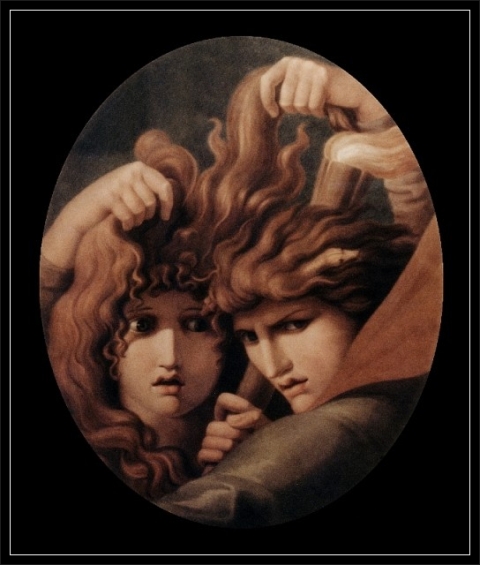
by Moe | Jul 19, 2021 | Demons, Gods & Goddesses
The Erinyes represent a powerful force of darkness in Greek Mythology that live under the ground within the earth. They dwell in the underworld of Tartarus where even the gods had feared them for it was the Erinyes who maintained the established the natural order of things.
The Erinyes are described in Eumenides , a play written by Aeschylus (c 525 – 455 BCE), the “Father of Greek Tragedy,” as Gorgon-like with dark and lothly with loathsome ooze dripping from their eyes, rejoicing in the smell of blood and suck the blood of men. They have the ability to punish humans for crimes against the natural order and their ancestors during life and after death. The glories of men waste away against their black-robed assault.
The principle message of their wrath is a simple one, “an eye for an eye, and a tooth for a tooth.”

They describe themselves in the chorus of Eumenides, “We are the eternal children of night, and called curses under the earth. All-pervading destiny has assigned us their lot to pursue murderers of kindred until the earth covers them, and dying, they are not freed from us.”
When swearing an oath to Achilles in Homer’s Illiad, he calls on Zeus, Earth, Sun, and “the Erinyes,” who under earth take vengeance on men, whoever has … (the Furies) merely working their magic from under earth or if this punishment is inflicted on those under the earth, that is, the dead.
The first historical mention was discovered written on the ancient Linear B tablets found at the City of Gnosis – Knossos on the Holy Island of Crete, in the following forms: e-ri-nu e-ri-nu-we.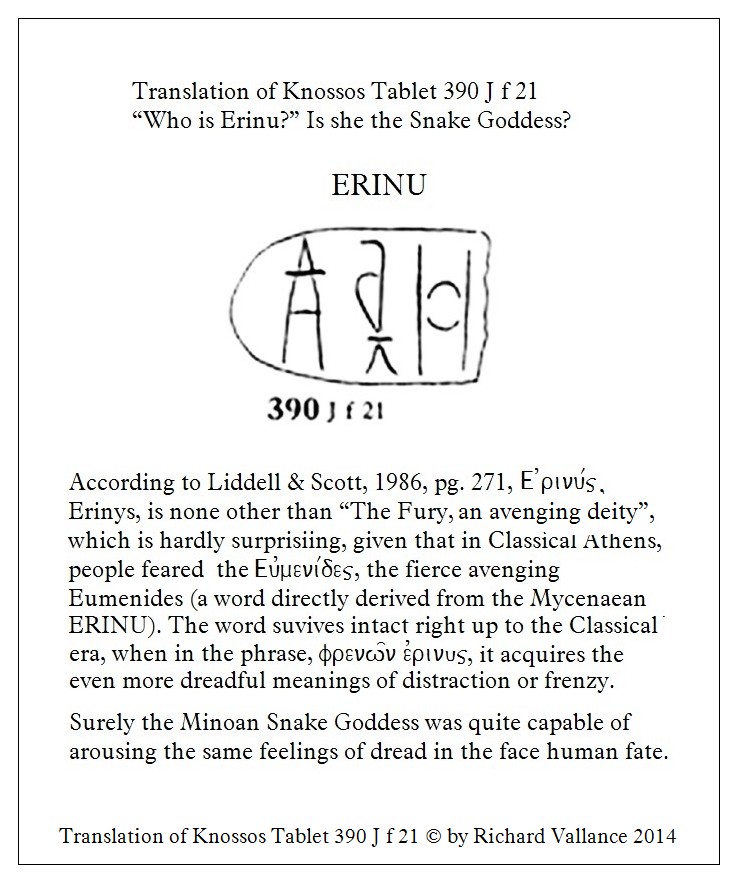
This connection to Crete also aligns with Homer’s Illiad. “One, from Ida, Most Glorious, Greatest, and Helios, You Who watch over all things and listen to all things, and rivers and earth and You Who under the earth punish weary human beings, whoever has sworn a false oath, You be witnesses, guard the oaths of trust”.
The name Ida would correspond to Mount Ida on Crete near Knossos. It is from this location where Josephus writing in the 1st century BC said the Idumeans would derive their name to become who we know as the Tribe of Idumeans or we know of today as the Tribe of Judah.
According to Hesiod’s Theogony, when the Titan Cronus castrated his father Uranus and threw his genitalia into the sea, the Erinyes and the Meliae emerged from the drops of blood when it fell on the earth (Gaia), while Aphrodite was born from the crests of seafoam.
Writing at a later date, the Roman poet Virgil named three in the Aeneid; Alecto or Alekto (“endless”), Megaera (“jealous rage”), and Tisiphone or Tilphousia (“vengeful destruction”).
Ovid writes in Metamorphoses, “(The Erinys) Tisiphone seized a torch steeped in blood, put on a robe all red with dripping gore and wound a snake about her waist, and started from her home; and with her as he went were Luctus (Grief) [Penthos] and Pavor (Dread), Terror (Terror), and Insania (Madness) (Mania) too with frantic face.”
Dante in Canto IX of the Inferno had mentioned the three deities of Erinyes who confront the poets at the gates of the city called Dis. Dante describes the Erinyes as three maiden goddesses, Demeter was worshipped under the title of Erinys in the Arkadian town of Thelpousa.
The Athenians who were Brothers with the Cretans had a sanctuary in Athens that Pausanias said was dedicated to the Erinyes. He writes;
“Hard by [the Areopagos the murder court of Athens] is a sanctuary of the goddesses which the Athenians call the August, but Hesiod in the Theogony calls them Erinyes (Furies). It was Aeschylus who first represented them with snakes in their hair.
But on the images neither of these nor of any of the under-world deities is there anything terrible. There are images of Pluto, Hermes, and Earth, by which sacrifice those who have received an acquittal on the Hill of Ares; sacrifices are also offered on other occasions by both citizens and aliens.”
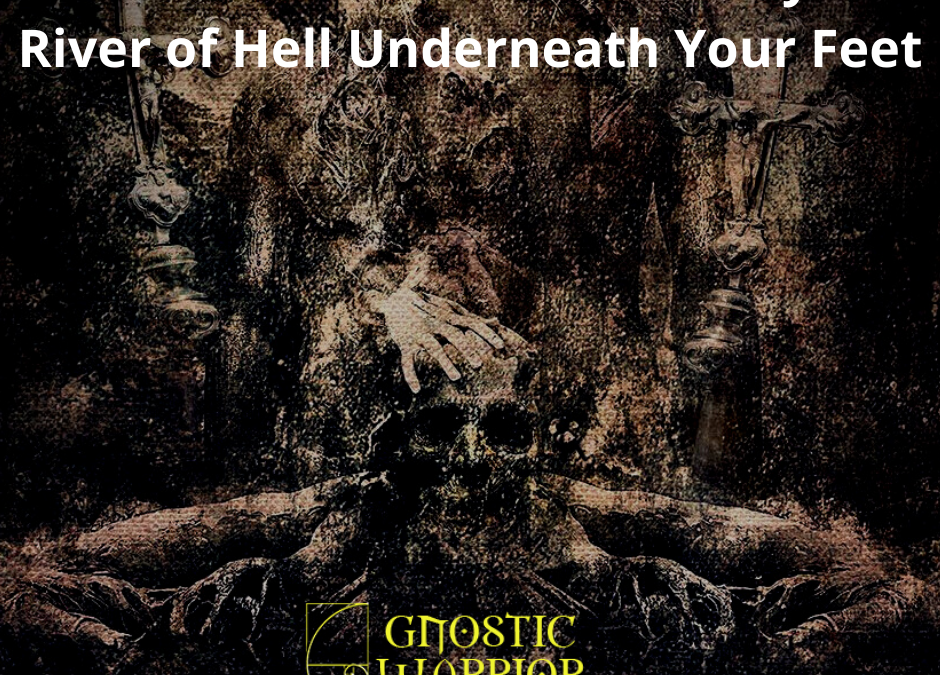
by Moe | Feb 8, 2021 | Demons, Gods & Goddesses, Hell
In Ancient Greece, mountains with subterranean caves served as entrances to a deity and a place called Hades or Tartarus, which would correspond to our modern concepts of hell in Christianity. These unique caverns were considered ancient portals to the underworld, which the Greeks had described as “the Abyss which was a type of legal court that served as human dungeon and hall of punishment” where, according to Plato, “souls are judged after death and where the wicked received divine punishment.”

To the Ancient Greeks, the Abyss, or what is also called Acheron was a place that was located within the bowels of the earth that acted as a place of punishment and judgment ruled by a type of Terrestrial King or “living entity or hive mind” with a military regime of what are called judges in the Scripture. It wasn’t Hades, where the already judged and damned remain, but more like a spiritual courthouse where the dead allegedly go in order to receive their sentences.
The modern equivalent of Acheron or Charon is Haros or Charos (Greek: Χάρος), which is said to be used in common phrases such as “from the teeth of Haros” (Greek: από του Χάρου τα δόντια) meaning to come close to death or “you will be eaten (i.e. taken) by Haros”.
In other Greek myths, Pluto is known as the “Prince of Acheron” who ruled the underworld in a place called Tartarus, which is described as a “meadow” and “thick-shaded and dark,” where the Acheron encircles “the roots of the earth.” There was a unique wall or gate here known as “Pluto’s Gate or the Ploutonion at Hierapolis” in the ancient city of Hierapolis.
This description of “the roots of the earth” and a “meadow” that is “thick-shaded and dark when compared to other ancient and modern descriptions, gives more clues to its whereabouts. We also know that these earth’s roots are connected to Hades, Tartarus, and the place of judgment where Plato tells us “souls are judged after death and where the wicked received divine punishment.”
Plato also mentioned that the Acheron flowed in the opposite direction from Oceanus beneath the earth under desert places. Virgil stated that Acheron with the other infernal rivers in his description of the underworld where he mentions Juno, “flectere si nequeo superos, Acheronta movebo: ‘If I cannot bend the will of Heaven, I shall move Hell.” Sigmund Freud has written in “The Interpretation of Dreams,” that the myths of Acheron were related to a “psychological underworld beneath the conscious mind.”
This would align with my modern interpretation as these great myths relate to modern science and the fact that there is an internet of fungi/molds beneath and within our own feet and bodies. Microscopic entities that we live symbiotically with but it appears as soon as we act subhuman, live unhealthily, or as Christians would say, sin, they become pathogenic and cause illness, diseases, and death in humans.
This would be what the Ancient Greeks would call the Abyss and bowels of the earth in which people who live in this material noosphere via their own second brains or bowels become connected and controlled. A type of symbiotic relationship that normally ends up in doom for the unsuspecting person who has transgressed against these ancient laws of being human.
The very microorganisms who I contend with and documented via my Toxic Mold and Fungal Infection articles are the internal and external microscopic legislators of the human race. Perhaps, this worldwide internet of the dead, the realm of Fungal Shades and its courts had first started here in Acheron?
When researching for the possible location of this mountain and names of these caves, I found an interesting story of an entrance to Tartarus in a place known as Thesprotia near a river called Acheron (Acherusia) and a cave called called “Aornum, Charon or Charonium (Χαρώνειον ἄντρον or χάσμα)” which gave forth poisonous vapors.
In various Greek legends, Aornum (Ancient Greek: Ἄορνον) was an oracle and the name of the cave that is alleged to be where Orpheus travels to recover his wife, Eurydice. It is also known as “Charon’s Cave”, which reflects the belief that it was an entrance for Tartarus or Hades. Strabo also has referred to this legend in describing Aornum and also speaks of other Charonia ( Xapóvia ) where poisonous vapors rise.
For a place of judgment of the damned to be so dreaded and hellish, I find it interesting that Plato described Acheron as the second greatest river in the world, excelled only by Oceanus. The Orphic mysteries had also claimed that the first entity or who we may call the primordial man from which the Light and the cosmos was born here.
The same place that is also known as Tartarus, Hades, and Hell, where, according to Plato, “souls are judged after death and where the wicked received divine punishment.”
When I read these stories, and search for clues of this mountain, river, and cave, I immediately recognize parallels with the ancient myth of the infant Zeus who was placed inside a cave on the Holy Island of Crete by the Magi priest known as the Curetes or Telchinines to protect the child from being “eaten by his father,” Chronos.
This makes sense because Pausanias had written that among the sights of Thesprotia was a sanctuary of Zeus which is near Cichyrus and a lake called Acherusia, and a river called Acheron.
These Greek myths of hell being a place of judgment, that is underneath our feet, and also being eaten can also be connected to the ancient Phoenicians/Hebrews concepts of Mot or Mut, or māwet/mōt, which is the Hebrew word for ‘death’. Muth was described by Philo of Byblos as the equivalent of both Thanatos (Death personified) and Pluto. It is also, however, the name of a specific Canaanite deity or demon, Mot (more precisely Mōtu), known especially from the Ugaritic literature.
In Hebrew scriptures, Death (“Maweth/Mavet(h)”) is sometimes personified as a devil or angel of death (e.g., Habakkuk 2:5; Job 18:13). In both the Book of Hosea and the Book of Jeremiah, Maweth/Mot is mentioned as a deity to whom Yahweh can turn over Judah as punishment for worshiping other gods
In some myths, Mot or Death sends back a message that his appetite is that of lions in the wilderness, like the longing of dolphins in the sea and he threatens to devour Ba’al himself. It has been said that the Jewish tradition of Passover may have begun as a ritual connected with the myth of Mot killing Baal, who was the God of Fire (Phosphorus or Latin Lucifer).
Phoenician historian and a priest of Byblos, Sanchuniathon (Phoenician: 𐤎𐤊𐤍𐤉𐤕𐤍) said;
From this was produced Môt which is the Semitic word for ‘Death’ but which the account says may mean ‘mud’ which some call Ilus (Mud), but others the putrefaction of a watery mixture. And from this sprung all the seed of the creation, and the generation of the universe.
And there were certain animals without sensation, from which intelligent animals were produced, and these were called Zophasemin, that is, the overseers of the heavens.”
Sancuniathon tells us Môt means Death, which some call Ilus (Mud), which is described as a “putrefaction of a watery mixture,” from this sprung all the seed of the creation, and the generation of the universe. He then explains that this Mot AKA Ilus (Mud)’s name is also Cronus whose father is Our-anus situated in the middle of the earth. He had written;
“In the thirty-second year of his power and reign, Ilus, who is Cronus, having laid an ambuscade for his father Ouranus in a certain place situated in the middle of the earth, when he had got him into his hands dismembered him over against the fountains and rivers.
There Ouranus was consecrated, and his spirit was separated, and the blood of his parts flowed into the fountains and the waters of the rivers; and the place, which was the scene of this transaction, is shewed even to this day.”
In Greek mythology, Cronos (Cronus or Kronos) was the Lord of the Harvest and in Rome, he was called Saturn. He was the leader of the first generation of Titans who overthrew his father Ouranus and ruled during the mythological Golden Age and to prevent any of his sons or daughters from ruling in his stead, he had a habit of “eating them.”
After Rhea secretly gave birth to Zeus in Crete, to prevent Cronos from eating the infant, she handed Cronus a stone wrapped in swaddling clothes, also known as the Omphalos Stone, which he swallowed, thinking that it was his son, Zeus.
Once Zeus had grown up, he forced his father Cronus to regurgitate the contents of his stomach in reverse order: first the stone, which was set down at Pytho under the glens of Mount Parnassus to be a sign to mortal men, and then his two brothers and three sisters.”
The story of Cronus eating his children is interpreted by some people like me as an allegory to a specific aspect of time held within Cronus’ sphere of influence. This sphere I contend deals with an ancient science that connects Cronus to our Stomachs or Gi Tracts, which science has proved is our second brains and can influence our thoughts in a bad way, which may explain his fierce nature and without hesitation, he eats his own children.
The meaning of Cronos or Kronos is composed of the words ‘kro and nus’. It is related to the Hebrew words קָרוֹב karov and קְרוֹבָה krova, which means close or near and the meaning of the word kerev isinterior, inside; (in plural) innards. בְּקֶרֶב Bekerev, means among, amidst; internally, on the inside and קְרָב krav is battle, combat; struggle, race, competition.
The location of this mountain where this entry to Hades is still disputed amongst academians being either the Psychro Cave (Greek: Σπήλαιο Ψυχρού), which is claimed to be the Diktaean Cave (Greek: Δικταῖον Ἄντρον Diktaion Antron) in Lasithi plateau of eastern Crete or Mount Ida, which is the exact location where who Josephus called the Idumean had spawned and who we call the Tribe of Judah.
The same Tribe of David, Solomon, and later Jesus.
As I explain in my previous article, Pergamon: The Throne and City of Satan, in the Christian Scripture, we read of the home of Satan is located in Revelation 2:12 at Pergamos. Where Satan’s throne is,” and home to one of the seven churches written about by Saint John in the Book of Revelation.
It was the original uncorrupted church of Christ that later became the seat of Antichrist or Throne of Satan.
Satan’s throne was located here near Mount Ida at Knossos (The City of Gnosis), which was also known anciently as the Ancient Naval Center of the Old World. The name Navy or Naval means “a central point; and or a middle” from the Latin medius, meaning middle, and terra, meaning earth, and also the center of the human bowels and what we call our second brain.
So it would make sense that this location would have been chosen as being Holy due to its age, history, and rituals performed within these caves and on this soil for what I contend, thousands of years until the traditional religion was conquered in favor of a corrupted one for world dominion.
“And it is called Akheron (Acheron) since within the bosom of the earth it goes forward pouring forth pains.” (Melanippides, Frag 759 (from Stobaeus, Anthology -Greek lyric 5th B.C.)
I will let the great Plato finish my thesis to put this in perspective on how this great human drama plays out and I contend, has been the heiros gamos for the last 3,000 plus years.
“[The] streams are many and great and of all sorts, but among the many are four streams, the greatest and outermost of which is that called Okeanos (Oceanus), which flows round in a circle, and opposite this, flowing in the opposite direction, is Akheron (Acheron), which flows through various desert places and, passing under the earth, comes to the Akherousian (Acherusian) Lake.
To this lake the souls of most of the dead go and, after remaining there the appointed time, which is for some longer and for others shorter, are sent back to be born again into living beings. The third river flows out between these two, and near the place whence it issues it falls into a vast region burning with a great fire and makes a lake larger than our Mediterranean sea, boiling with water and mud.
Thence it flows in a circle, turbid and muddy, and comes in its winding course, among other places, to the edge of the Akherousian lake, but does not mingle with its water.
Then, after winding about many times underground, it flows into Tartaros at a lower level.
This is the river which is called Pyriphlegethon, and the streams of lava that spout up at various places on earth are offshoots from it. Opposite this the fourth river issues, it is said, first into a wild and awful place, which is all of a dark blue color, like lapis lazuli. This is called the Stygios (Stygian River), and the lake which it forms by flowing in is the Styx.
And when the river has flowed in here and has received fearful powers into its waters, it passes under the earth and, circling round in the direction opposed to that of Pyriphlegethon, it meets it coming from the other way in the Akherousian Lake. And the water of this river also mingles with no other water, but this also passes round in a circle and falls into Tartaros opposite Pyriphlegethon. And the name of this river, as the Poets say, is Kokytos (Coytus). Such is the nature of these things.
Now when the dead have come to the place where each is led by his genius (daimon) [i.e. by Plato’s equivalent of Hermes Guide of the Dead], first they are judged and sentenced [i.e. by the Judges of the Dead], as they have lived well and piously, or not.
And those who are found to have lived neither well nor ill, go to the Akheron and, embarking upon vessels provided for them [i.e. the equivalent of Kharon’s (Charon’s) skiff], arrive in them at the lake; there they dwell and are purified [i.e. by the equivalent of the Erinyes], and if they have done any wrong they are absolved by paying the penalty for their wrong doings, and for their good deeds they receive rewards, each according to his merits.
Those who are curable, but are found to have committed great sin–who have, for example, in a moment of passion done some act of violence against father or mother and have lived in repentance the rest of their lives, or who have slain some other person under similar conditions–these must needs be thrown into Tartaros, and when they have been there a year the wave casts them out, the homicides by way of Kokytos, those who have outraged their parents by way of Pyriphlegethon.
And when they have been brought by the current to the Akherousian Lake, they shout and cry out, calling to those whom they have slain or outraged, begging and beseeching them to be gracious and to let them come out into the lake; and if they prevail they come out and cease from their ills, but if not, they are borne away again to Tartaros and thence back into the rivers, and this goes on until they prevail upon those whom they have wronged;
for this is the penalty imposed upon them by the judges.”
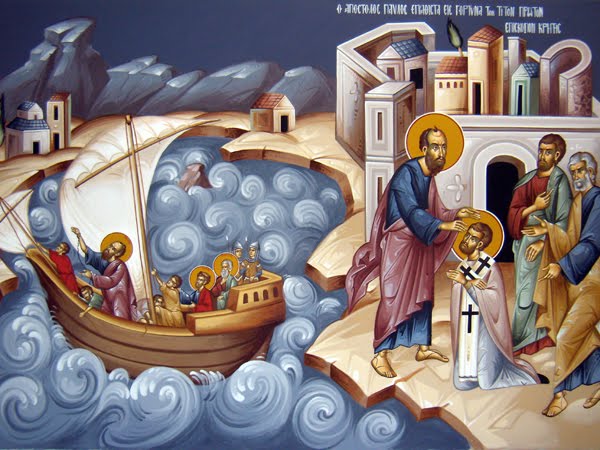 xx. 23. – Godfrey Higgins
xx. 23. – Godfrey Higgins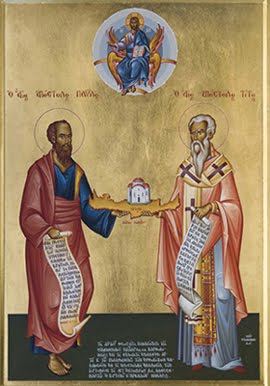 The name Crete is derived from the Greek word Kriti (Kri-ti), which means ‘creation.’ The meaning of the English word Cre’ate, is “to form out of nothing, to creo, creatum – cause to exist.” Hence, FIAT LUX.
The name Crete is derived from the Greek word Kriti (Kri-ti), which means ‘creation.’ The meaning of the English word Cre’ate, is “to form out of nothing, to creo, creatum – cause to exist.” Hence, FIAT LUX.








